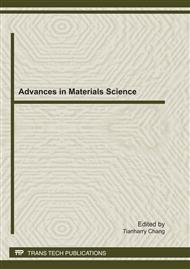p.120
p.124
p.130
p.134
p.139
p.143
p.149
p.153
p.159
Effect of Stretching Temperature on Proteolysis, Expressible Serum and Titratable Acidity of Mozzarella Cheese
Abstract:
The impact of stretching temperature on proteolysis, titratable acidity and expressible serum of Mozzarella cheese during storage at 4 °C was determined. Three vats of cheese with three different stretching temperatures (75 °C, 85 °C, 95 °C) were made in one day. Cheese making was replicated on three different days as a randomized block design. Cheeses stretched at temperature of 95 °C had the lowest values of titratable acidity. Nitrogen soluble in pH4.6 acetate buffer and 12% TCA increased for all cheeses with age, but the rates of increase were slower in cheese stretched at higher temperature. This indicated that the coagulant and starter culture were heat inactivated during stretching at higher temperature. The amount of expressible serum obtained on centrifugation at 12500 rpm for 60 min at 25 °C decreased during aging, corresponding to an increase in water-binding properties. However, the rate of decrease was much lower in cheese stretched at higher temperature, which indicated the persistence of poor water-binding properties.
Info:
Periodical:
Pages:
139-142
Citation:
Online since:
September 2011
Authors:
Price:
Сopyright:
© 2011 Trans Tech Publications Ltd. All Rights Reserved
Share:
Citation:


